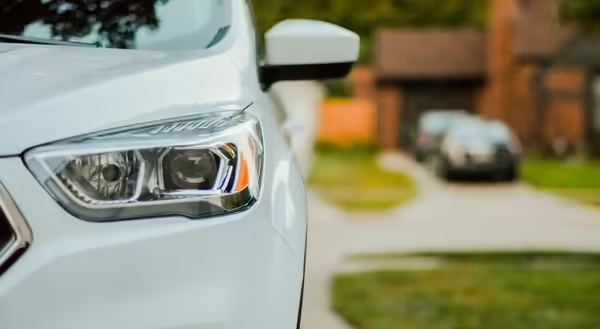
Big purchases can be overwhelming! While having reliable transportation may be a necessity, find ways to benefit your financial well-being by learning how to make decisions that fit your values. While public transportation is typically the most economical choice, the options may be limited in many areas and owning a vehicle may be the best option for meeting your transportation needs. Understand the difference between what you want in a vehicle and what you actually need. Take insurance and maintenance costs into account when budgeting your vehicle costs. Knowing how much you can afford, what you need in a vehicle, and the continuing costs of owning and using a vehicle are important factors when planning to spend money on a large purchase.
Wants and Needs
You may need to purchase a vehicle to go to work, transport children, get to doctor appointments, make grocery shopping trips, and many other transportation needs. While you may want to be driving in style and comfort, the cost of what you envision may not fit the reality of your financial situation. Balance what you need with how much you are willing to spend on extras you want in a vehicle. With so many vehicle options available, you can easily be distracted by all the bells and whistles you can purchase. To prevent this distraction, plan ahead. Know how much you can afford to spend and how much you are willing to spend before shopping for a new vehicle.
Borrowing money
With the high cost of purchasing a vehicle, an auto loan tends to be used to make the purchase. Taking on debt, as discussed in a recent article Deciding on debt: To borrow or not to borrow?, should be given much consideration as it is a financial commitment that impacts your future financial wellness. Learn more about borrowing and, specifically, auto loans, before borrowing money. Understand that the price tag is much higher when you consider all purchase costs. In addition, the interest on the loan can make the vehicle price much higher in the end. Be sure to consider the length of the loan and the value of the vehicle over time to prevent being underwater or owing more than the vehicle is worth down the road as this is called negative equity.
Insurance and maintenance
Comprehensive and liability insurance coverage. While you are legally required to have a minimum amount of liability insurance, protecting your assets may be an important consideration for you. If you are in an accident, are you able to cover the cost of repairs or replacement to the vehicle without additional insurance coverage? Learn more about auto insurance from the Illinois Department of Insurance to decide what type and how much coverage you want on your vehicle. Also, consider additional registration and maintenance costs, as these expenses should be part of your spending plan.
Electric and hybrid options
Once you own a vehicle, the costs do not stop with the loan payments, insurance, and maintenance. Unless you own an electric or hybrid vehicle, you may have regular costs with filling up the tank with gas. According to the U.S. Energy Information Administration, the current gas prices for July averaged $3.46 per gallon. If you decide on an electric or hybrid vehicle, finding places and the time to charge your vehicle may be a new challenge. The U.S. Department of Energy provides a map of alternative fueling stations to assist with planning longer trips that may require stopping to charge.
Transportation is one of the biggest household expenses in the U.S. Making car-buying decisions can greatly impact your financial wellness, so take the time to learn as much as possible before committing. The number of options available can make it challenging, but feeling good about your choice is better than feeling buyer's remorse afterward, so invest your time in learning about what option is best for your needs and values. Anytime you are spending money, remember the opportunity cost of being able to use that money for a different purpose. Prioritize what you value most with your money.
References
Consumer Financial Protection Bureau (CFPB). (2023, September). Auto trade-ins and negative equity: When you owe more than your car is worth. Consumer Advice.
Consumer Financial Protection Bureau (CFPB). (2023, September 12). How much can I afford to borrow for a car or auto loan?. Ask CFPB.
Mahlandt, J. (2024, March 13). Deciding on debt: To borrow or not to borrow? University of Illinois Extension: Finding Financial Balance blog.
Illinois Department of Insurance. (2024). Auto insurance. Auto Insurance Shopping Guide.
U.S. Department of Energy. (2024). Alternative fueling station locator. Alternative Fuels Data Center.
U.S. Department of Energy. (2024). Gasoline and diesel fuel update. Gasoline and Diesel Fuel Update – U.S. Energy Information Administration (EIA).
U.S. Department of State. (2024). Vehicle Liability Insurance Requirements. state.gov.
Meet the Author
Jamie Mahlandt is a Financial Educator for Bond, Clinton, Jefferson, Marion, and Washington counties in Southern Illinois. She provides financial education to the local community with an emphasis on financial literacy and financial well-being.
Subscribe
Subscribe to blog updates HERE.